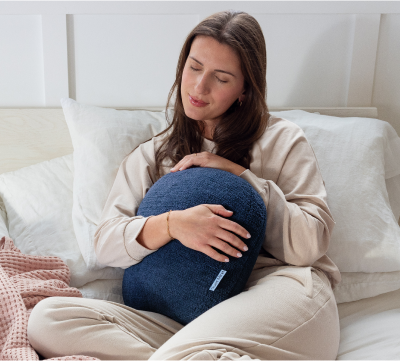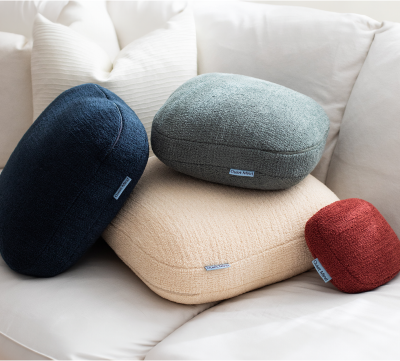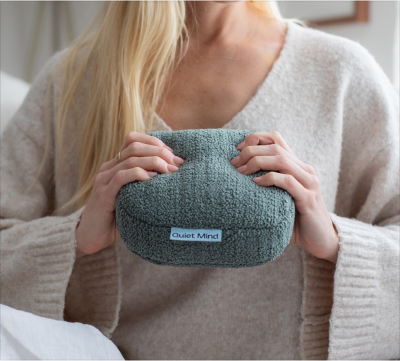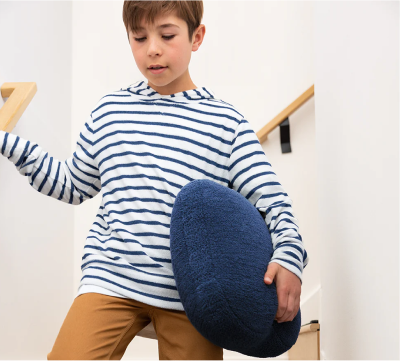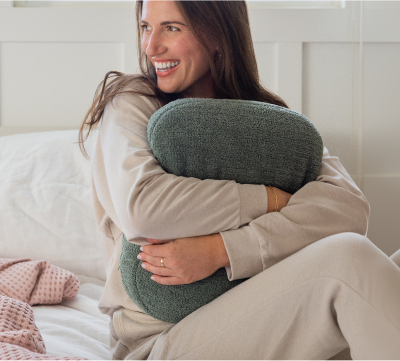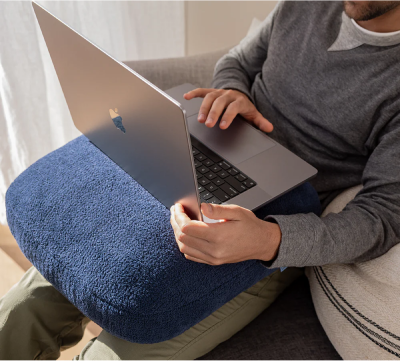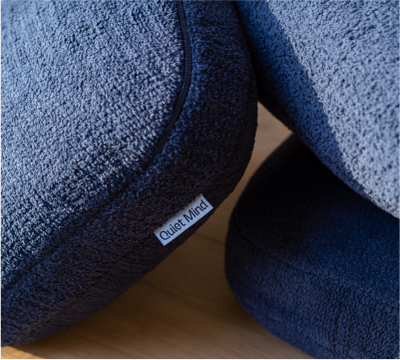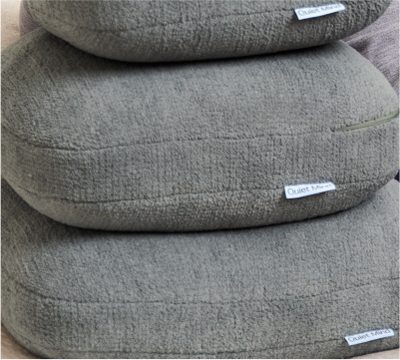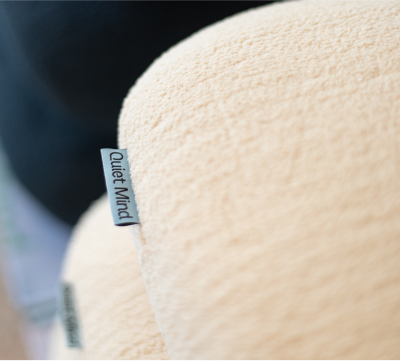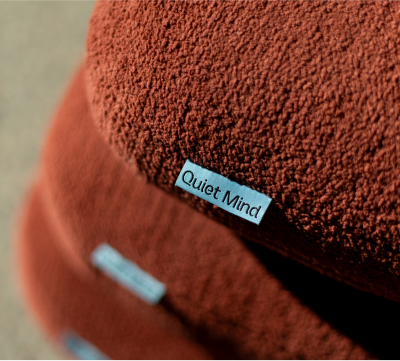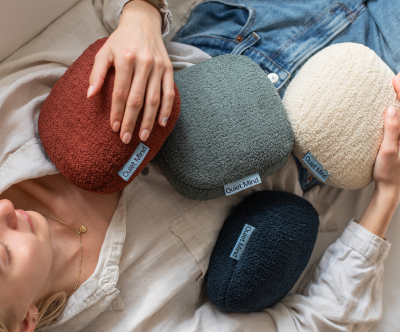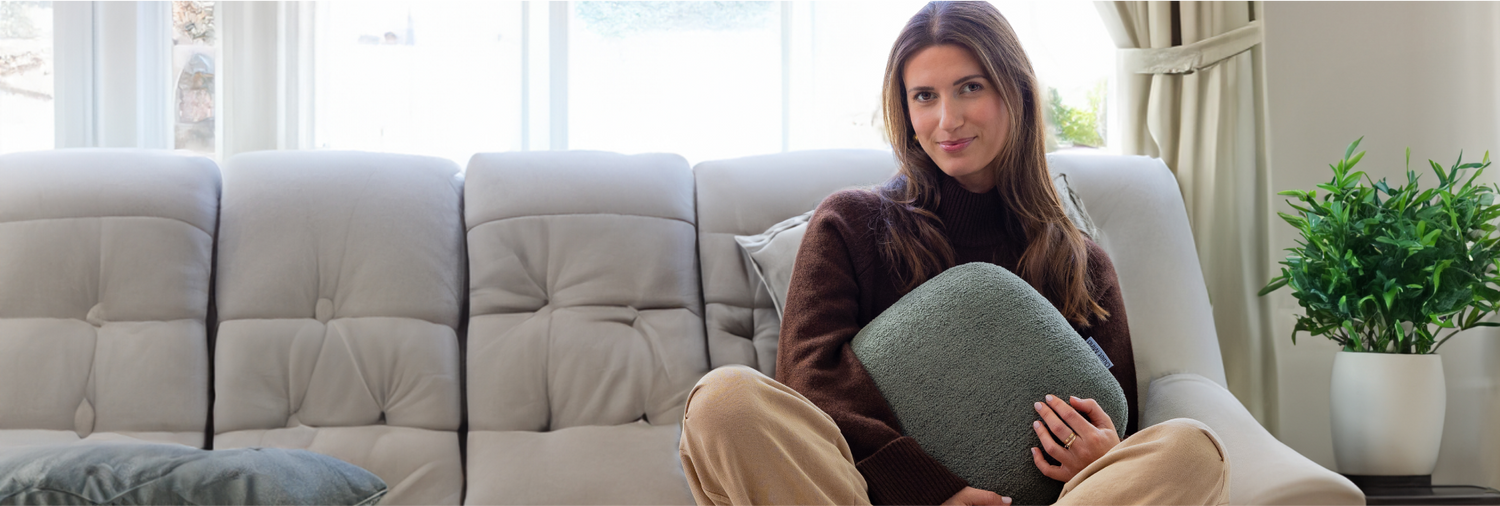The neighbors are mowing the lawn, the dog is barking at the lawnmower, and the kids are yelling at the dog to be quiet. In all the chaos, you burned dinner, and now the smoke alarm is going off. The sensory input and stress are just too much, and now you’re hiding out in the bathroom, trying to get it together. Sensory overload can happen to anyone.
For some, it’s part of a chronic issue known as sensory processing disorder (SPD). For others, it’s related to conditions like autism, attention deficit hyperactivity disorder (ADHD), or post-traumatic stress disorder (PTSD). Sometimes, it’s just the stress of daily life. It can be an occasional fleeting feeling or an ongoing issue that you deal with every day.
Regardless of the cause, the right coping strategies can help you regain control and improve your resistance. From identifying triggers to grounding techniques, here’s how to deal with sensory overload in adults, manage overwhelm, and find calm amid the chaos.
What is Sensory Overload?
Sensory overload happens when sensory input becomes overwhelming, flooding your nervous system with too much sensory information at once. When confronted with this flood of stimuli, the body responds by activating the sympathetic nervous system, triggering a fight-or-flight response.
Environment, past experiences, anxiety disorders, and individual sensory sensitivity can all contribute to your sensitivity to sensory input. The intensity and triggers of sensory overload can also vary significantly from one person to the next.

How to Stop Sensory Overload in Adults
Sensory overload can significantly impact daily life, but there are practical strategies to help adults regain control. Here’s how to stop sensory overload in its tracks and improve your resistance over time.
Utilize Sensory Grounding Techniques
Sensory grounding techniques are invaluable tools for dealing with sensory overload quickly. You can regain control when feeling overstimulated by intentionally anchoring yourself in the present moment.
Deep Pressure Stimulation with a weighted pillow applies gentle, firm pressure to the body. This therapeutic approach stimulates the proprioceptive system by placing pressure on the joints and muscles.
This proprioceptive input causes the brain to release neurotransmitters like melatonin, dopamine, and serotonin. At the same time, it reduces the amount of stress hormones in your system. These combined effects regulate the nervous system and trigger a shift from fight or flight to rest and digest, calming and soothing your overstimulated senses.
Simply hug or cuddle the Original Weighted Pillow, place it in your lap, or lay it across your chest to quickly ground yourself and calm your senses. It’s the perfect sensory overload tool to use at home or on the go, anytime and anywhere you need relief from sensory overload.
Practice Deep Breathing, Mindfulness, and Meditation
Deep breathing, mindfulness, and meditation are powerful practices that help adults alleviate sensory overload symptoms. Deep breathing exercises, in particular, can help regulate the autonomic nervous system and calm sensory overload quickly.
By taking slow, deliberate breaths and focusing on the sensation of air entering and leaving the body, you can activate the parasympathetic nervous system and counteract the fight-or-flight response triggered by sensory overload.
Mindfulness and meditation are also beneficial for developing greater resilience to sensory overload over time. Consider making these practices a regular part of your routine to create a greater sense of calm and balance in your daily life.
Create a Calm and Comfortable Space
Designate a quiet and comfortable space in your home where you can retreat during moments of sensory overwhelm. Personalize the space with your weighted pillow, a soft blanket, soothing lighting, and calming music.
To create a sensory-friendly environment, minimize noise and clutter, and incorporate calming textures and colors. A designated sanctuary can provide a refuge from overwhelming stimuli and allow you to reset and rejuvenate your senses.
Reduce Noise and Visual Stimuli
Take proactive steps to minimize sensory overload by reducing exposure to loud noises and excessive visual stimuli. Invest in noise-canceling headphones or earplugs to dampen environmental noise in crowded settings when you’re on the go.
At home, dim or filter harsh lighting to create a more soothing visual environment. Use blinds or curtains to block your view of crowded sidewalks, traffic, or flashing lights from nearby signs or buildings.
Prioritize Routine and Structure
Establishing a consistent daily routine can provide a sense of structure and stability, helping to mitigate sensory overwhelm. Create a schedule that includes regular mealtimes, sleep routines, and breaks throughout the day to promote balance and predictability.
Be sure to make time for sensory-friendly activities throughout your day, too. Gentle exercise, creative hobbies, spending time in nature, and other relaxation techniques can all help to improve your resilience to sensory overload over time.
Manage Stress and Anxiety Levels
Stress and anxiety can make you more prone to sensory overload. Consider integrating Deep Pressure Stimulation into your stress management routine alongside traditional stress management techniques like mindfulness and meditation.
Holding or cuddling the Original Weighted Pillow can help calm the mind and alleviate tension, reducing stress and anxiety symptoms. Whether you’re facing a hectic day at work or navigating a crowded flight, our weighted pillow can offer a convenient source of calm and support throughout your day.
Engaging in activities that bring you joy and fulfillment, whether spending time in nature, listening to music, or connecting with loved ones, is also essential. Prioritize self-care, including adequate sleep, healthy nutrition, and regular exercise, to support overall well-being and improve your resilience to sensory input.
Identify Your Triggers
Pay attention to your sensory triggers and patterns to better anticipate and manage overwhelm. Try keeping a sensory journal to track your experiences and identify recurring triggers related to specific environments or activities.
Once you’ve identified your triggers, brainstorm strategies to minimize their impact or mitigate their effects. Simple changes, such as taking a different route to work or wearing noise-canceling headphones when your neighbor mows the lawn, can make all the difference.
What Causes Sensory Overload?
Understanding how your senses become overloaded can help you pinpoint your triggers and develop your personal management strategies.
Different sensations can cause sensory overload, and the triggers can differ for everyone. Some are overwhelmed by loud, persistent noises, while others are sensitive to bright lights, flashing lights, or too much visual stimuli.
Overpowering scents, wearing scratchy or uncomfortable clothing, or eating foods with intense flavors or a particular texture can also contribute to sensory overwhelm. Many times, the sensory experience involves multiple senses at once.
Imagine you’re at a concert with hundreds of people screaming around you. The scent of food is heavy in the air, lights and screens are flashing everywhere, and you’re being jostled by the crowd. There’s no way to escape the onslaught of stimulation. Hello, sensory overload!
We all know about the five senses of sight, sound, taste, touch, and smell. But they’re not the only senses that can contribute to sensory overload. We also have at least three more senses that can come into play here.
-
Proprioception: The proprioceptive sense tells your brain where your body is in space. It helps us feel grounded. The sudden sensation of falling when drifting off to sleep is an excellent example of how proprioceptive signals can trigger alarm.
-
Vestibular Sense: The vestibular receptors in your inner ear help you maintain balance. They are stimulated by changes in position, direction, or movement. Motion sickness caused by a rocking boat is the perfect example of how vestibular stimulation can contribute to sensory overload.
- Interoception: Interoception, often called the hidden sense, keeps you informed about changes in your internal state, such as thirst, hunger, or the need to go to the bathroom. It also plays a role in emotional well-being. If you’ve ever felt your heart pounding in your chest from anxiety, you’ve got an idea of how this sense can contribute to sensory overload.
What Does Sensory Overload Look Like in Adults?
Sensory overload can look different for everyone. Common symptoms of sensory overload in adults can range from general feelings of stress and anxiety to overwhelming confusion, irritability, and inability to focus.
Some people with sensory overload issues also experience physical symptoms like shaking and trembling, sweating, tightness in the chest, or dizziness, or emotional responses like crying. It can even be like a snowball effect that grows and grows until it triggers a panic attack.
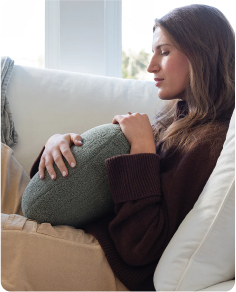
- John S
When to Seek Professional Help
Consider seeking professional help if your symptoms interfere with your daily life despite implementing self-care strategies. A qualified mental health professional, such as an occupational therapist, can help you identify your triggers and develop coping strategies to manage sensory overload more effectively.
Building Your Sensory Overload Toolkit
Now that you know how to deal with sensory overload in adults, take proactive steps to regain control and improve your resilience over time. Make Deep Pressure Stimulation through the use of the Original Weighted Pillow part of your everyday sensory overload toolkit.
DPS provides calming proprioceptive input, regulating the nervous system and reducing anxiety. By incorporating the soothing pressure of our weighted pillow into your daily life, you can stop sensory overload quickly and tap into a calmer state of mind whenever you need it.
